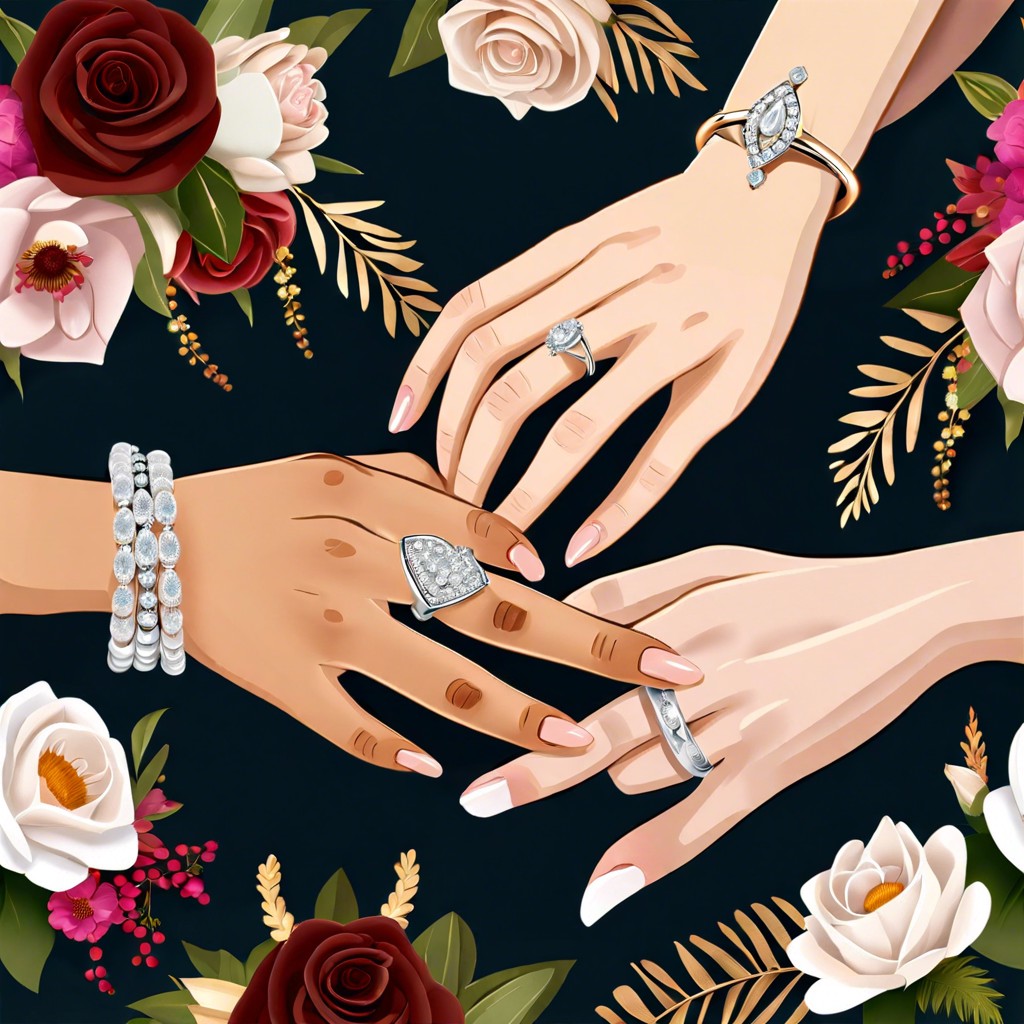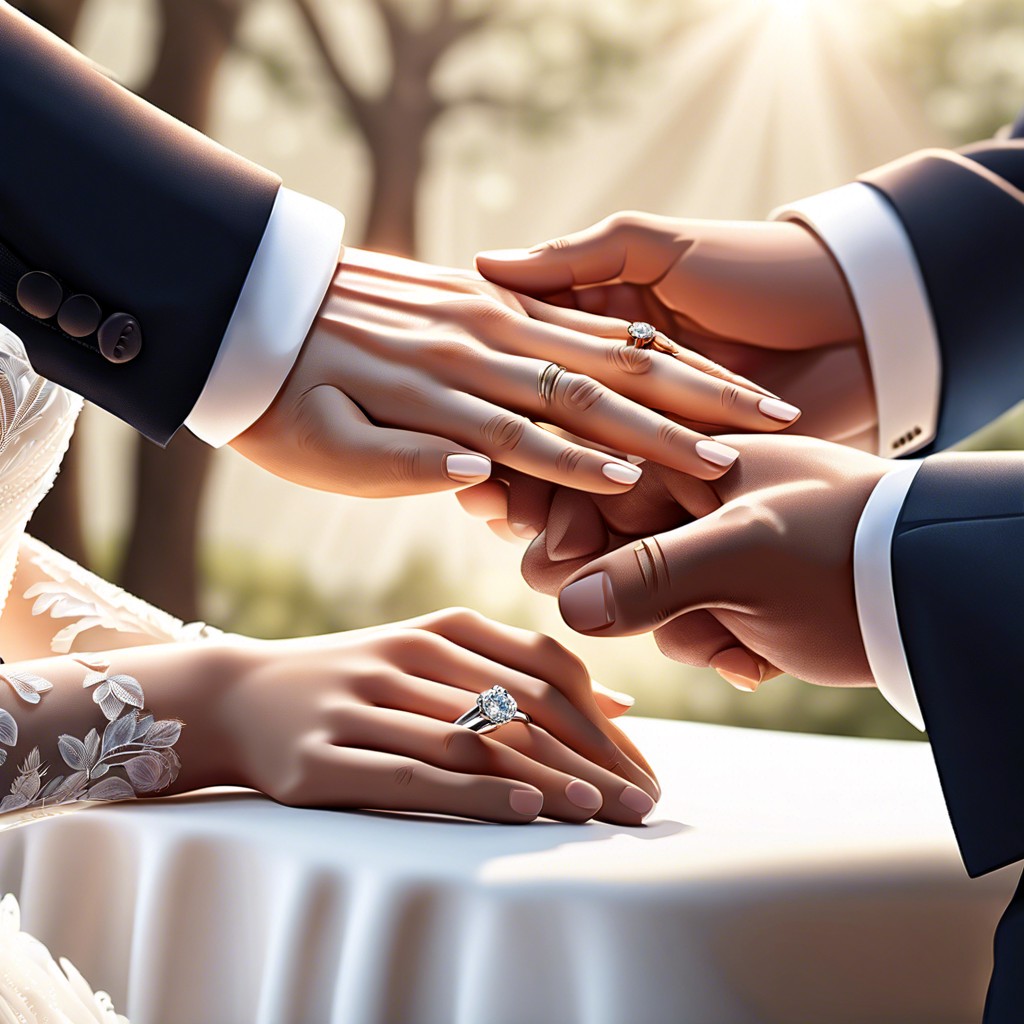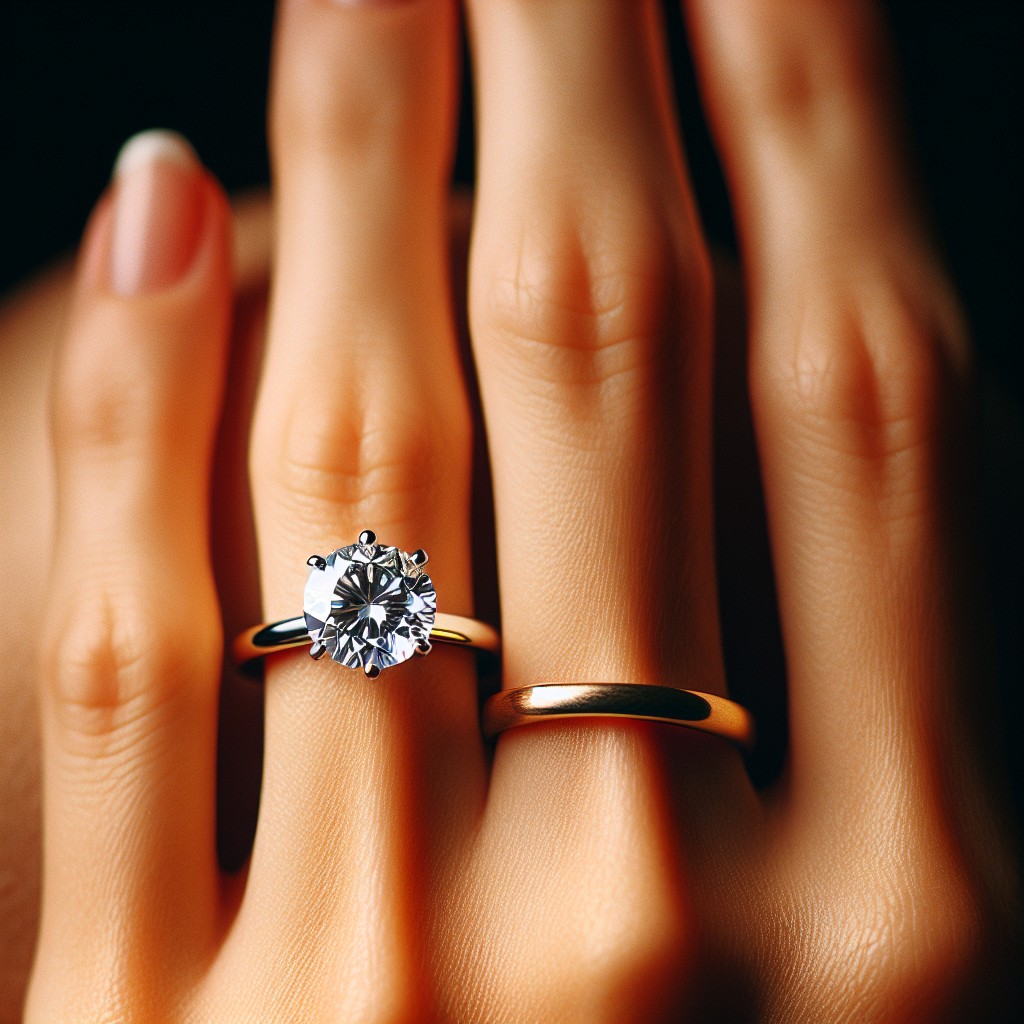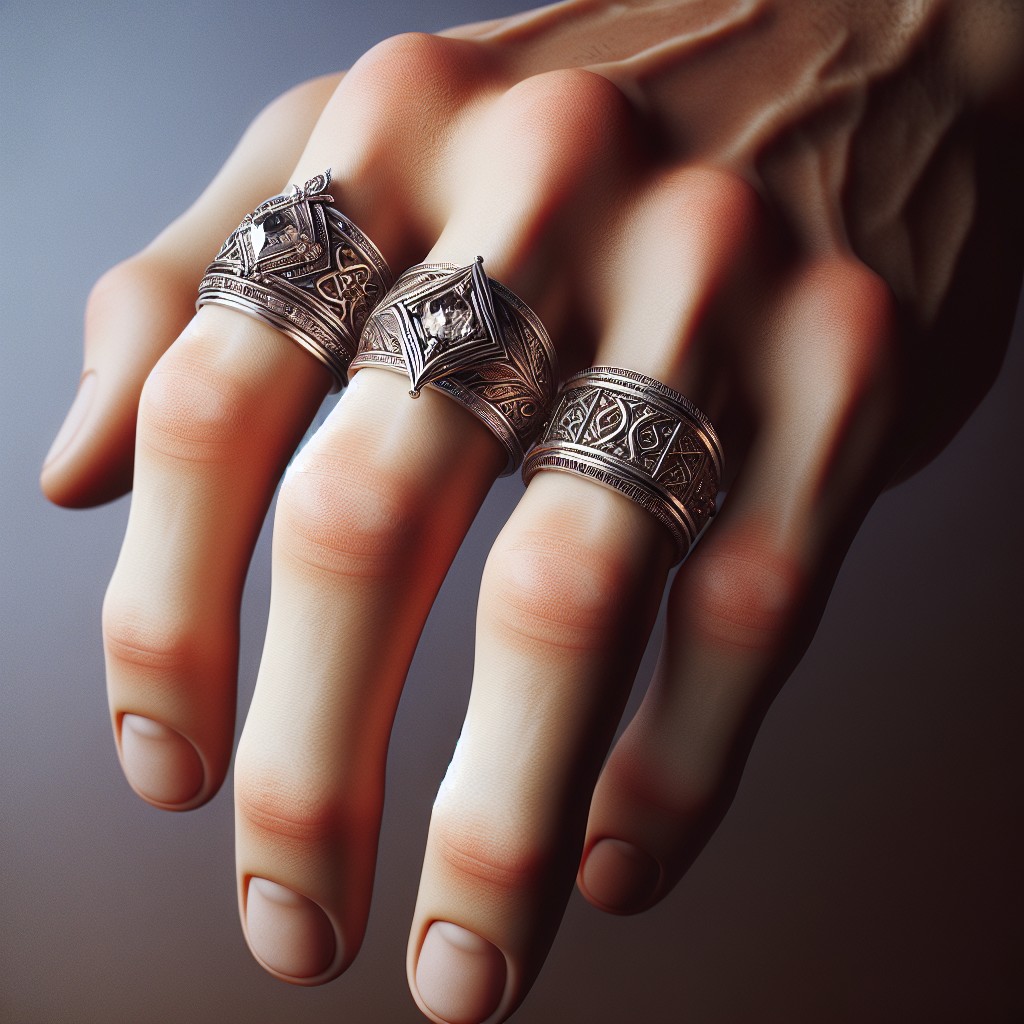Discover who traditionally purchases wedding bands and the modern approaches to this aspect of wedding planning.
Key takeaways:
- Groom traditionally buys bride’s wedding band, but modern approaches differ.
- Couples may split the cost of the rings or one partner may gift both.
- Family members may contribute or cover the cost of wedding bands.
- Consider personal preferences, finances, and meaningful traditions when deciding.
- Discuss expectations, consider sharing the cost, and honor traditions.
Who Buys the Wedding Bands?

Tradition often steers the decision when it comes to purchasing wedding bands. Historically, the groom buys the bride’s wedding band while the bride purchases the groom’s. This custom typically mirrors the exchange of rings during the ceremony itself, symbolizing a mutual gift of commitment.
Some couples, however, choose to split the cost of the rings as a reflection of their partnership and shared financial responsibilities. This modern approach acknowledges the union as an equal partnership.
Still, others might find that their individual circumstances suggest a different path. For instance, one partner may gift both bands as a special token of love and commitment.
It’s also not uncommon for family members to contribute to or fully cover the cost of the wedding bands as a gesture of support for the couple.
When deciding who should buy the wedding bands, consider your personal preferences, your financial situation, and any meaningful traditions you wish to honor. The most important factor is the mutual agreement between partners, ensuring that the decision feels right for both individuals.
Traditionally, Who Buys the Wedding Bands?
In many cultures, the responsibility of purchasing wedding bands is divided between the couple. It’s customary for the bride and groom to buy each other’s ring. This exchange symbolizes a mutual investment in their marriage and a token of love and commitment.
However, variations exist based on regional and familial traditions. In some cases, the cost of the bride’s ring is sometimes covered by her family as part of the dowry. Meanwhile, the groom’s family might pay for his ring in a gesture of welcoming the bride to their family.
This tradition has evolved, and today, couples often shop for rings together and split the cost regardless of who wears them. This approach reflects a partnership and shared financial responsibility for their joined future.
Alternatively, each partner may choose to purchase their own band, providing a personal touch to their wedding preparation and focusing on individual tastes within the relationship.
Understanding these traditions helps contextualize the purchasing decision, but remember, the ‘right’ way is the one that best reflects the values and circumstances of the individuals getting married.
How to Decide Who Buys?
Navigating who purchases the wedding bands can reflect personal preferences and unique relationship dynamics. Here are some points to consider when making this decision:
- Discuss with your partner to gauge each other’s expectations and financial situations. Open communication ensures that both parties are comfortable with the outcome.
- Consider sharing the cost. This modern approach can symbolize your partnership and joint investment in the relationship.
- Reflect on traditions that may be important to you or your families. Some couples opt to honor heritage by adhering to customary practices.
- Assess your overall wedding budget to determine where you can allocate funds for wedding bands without straining your finances.
- Explore the idea of the bands being a gift to each other, adding sentimental value to the gesture.
- Think about long-term financial planning, and how the decision about the bands fits into your wider financial goals as a couple.
By considering these points thoughtfully, you can arrive at a decision that feels right for both of you.
Shopping for Wedding Bands
When you’re ready to purchase wedding bands, consider these points to ensure a seamless selection process:
Budget: Before shopping, decide on a budget. This will guide your choices and help you stay focused on options within your price range.
Style Coordination: Think about whether you want your rings to match, complement each other, or express individual styles. Couples often shop together to find pieces that symbolize their union while still reflecting their personal tastes.
Size and Comfort: Proper sizing is crucial, as wedding bands are typically worn daily. Opt for a comfortable fit and consider how the ring feels on your hand, especially if you’re not used to wearing jewelry.
Metal and Durability: Various metals, from classic gold to contemporary tungsten, offer different looks and levels of durability. Consider lifestyle, work, and hobbies when choosing the metal, as this will influence the ring’s longevity.
Timeframe: Start shopping well in advance of the wedding date. Custom pieces or engraved rings require additional time, so factor this into your timeline to avoid last-minute stress.
Warranties and Policies: Inquire about return policies, warranties, and maintenance services, such as resizing or polishing offered by the jeweler, to safeguard your investment.
By keeping these points in mind, couples can find the perfect symbol of their love that they will be proud to wear every day.
Wedding Ring Traditions
Understanding the significance of traditions can imbue your ring exchange with deeper meaning. For many, these practices also honor cultural and familial heritage.
In Western cultures, wedding bands symbolize eternity and lasting commitment due to their circular shape with no beginning or end. This can be traced back to Ancient Egypt, where rings were believed to be connected to eternity. Romans adopted the practice and believed the ring finger had a vein, the “Vena Amoris,” leading directly to the heart, although medically this is not accurate.
Jewish ceremonies often see the band placed on the index finger, not the ring finger, as a representation that the marriage should come first in the couple’s priorities. In India, some brides wear toe rings (bichiya) instead of finger rings to signify marriage due to regional customs.
Meanwhile, some Scandinavian countries see both partners wearing engagement rings and then adding a second ring during the marriage ceremony. Joint purchases or exchanges of bands can be seen as a modern interpretation of equality within a partnership.
Being aware of these differing traditions allows couples to choose what best reflects their values and beliefs for their union. Whether choosing to embrace a particular custom or creating your own, these choices contribute to the unique narrative of your wedding.
Keep reading:




